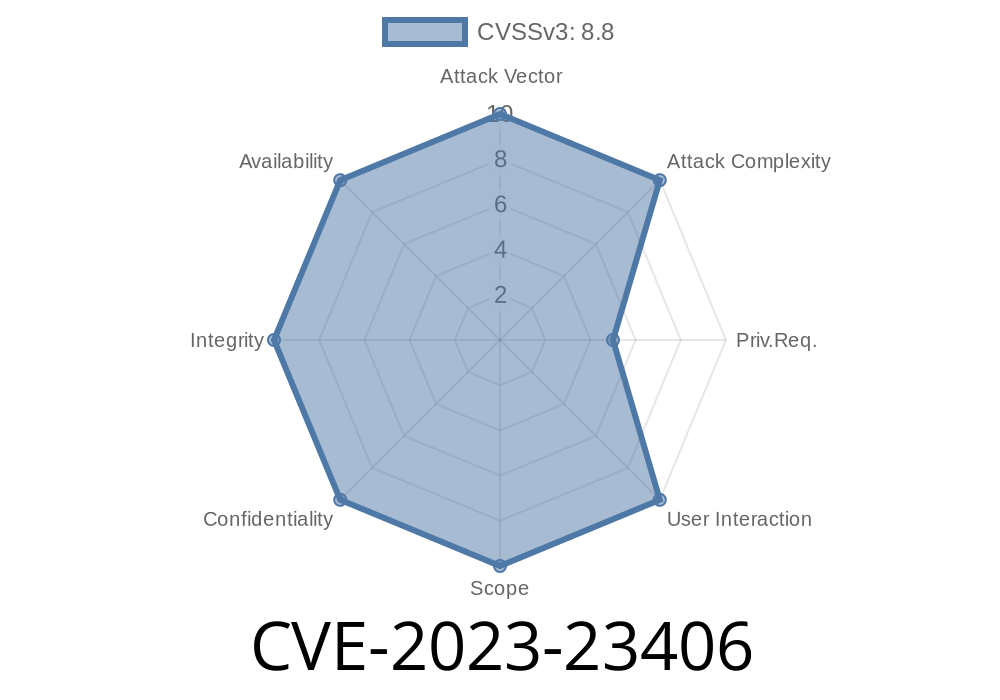---
Summary:
In February 2023, Microsoft published a critical security bulletin for a vulnerability that affects the PostScript and PCL6 Class Printer Drivers. Marked as CVE-2023-23406, this flaw allows remote code execution—meaning a hacker could run their own malicious code on your computer if you print an evil file or connect to a compromised print server. Below, we’ll explain how this exploit works, include code snippets, and link to the original references. We made this guide easy to understand, even if you’re not a deep security pro.
What is CVE-2023-23406?
CVE-2023-23406 is a critical vulnerability in Microsoft’s printer drivers that handle PostScript and PCL6 print jobs. These drivers ship with Windows 10, 11, and Windows Server systems out of the box.
When you print, the driver processes files sent to it. If the driver receives a maliciously crafted print job, it can be tricked into running code written by an attacker—not just printing text or images, but actually running programs on your computer.
Attack Complexity: Low
- Impact: The attacker gains the same privileges as the user who prints—often, that's as much as an admin!
Patched: February 2023 Patch Tuesday.
Original Reference:
- Microsoft's Security Advisory: CVE-2023-23406
- NVD Entry: NIST NVD CVE-2023-23406
Who’s at Risk?
- Anyone using Windows with the default "Microsoft PostScript" or "Microsoft PCL6 Class" printer drivers installed.
The Attacker Prepares a Malicious Print Job:
The attacker creates a print file with PostScript or PCL6 commands that exploit the vulnerability—a buffer overflow or a similar memory corruption bug.
Send Print Job to Target:
The print job is sent over the local network, a shared print server, or even via email/website where the user is tricked into printing it.
Code Execution:
As soon as the target system processes the file using the vulnerable printer driver, the embedded code gets executed on the system.
Simple Exploit Concept (Demo)
While the full exploit requires low-level knowledge and is quite technical (and responsible disclosure means we won't publish working malware here), here’s a simplified proof-of-concept to help you understand. Suppose a print job contains a long string in a part where the driver expects a small buffer:
Suppose the vulnerable driver reads PostScript job names into a fixed-size buffer
// Vulnerable snippet in printer driver (example, not real code)
void processJobName(char* jobName) {
char buffer[64];
strcpy(buffer, jobName); // Dangerous: No length check!
// ...process the buffer
}
An attacker could craft a print job with a job name that's 100 bytes long, and in that data, include machine code (shellcode) that gets executed when the buffer overflows.
The attacker might use a script to send a raw print job to a printer
import socket
ps_shellcode = "%!PS\n" + ("A"*100) # Overlong string triggers bug
with socket.create_connection(("printer_ip", 910), timeout=10) as s:
s.sendall(ps_shellcode.encode("ascii"))
Once this print job is received, the driver might crash—or worse, run attacker code.
Real-World Scenarios
- Corporate Print Network: An attacker gets access to the network (for example, as a guest or via phishing), then uploads a malicious driver or print job to a shared print server. Everyone who connects or prints is at risk.
- Malicious Document: You download and print a PDF from the internet that contains a special PostScript print command. Your system gets infected as soon as the print job is processed.
Patch Your System!
Microsoft fixed this in the February 2023 Patch Tuesday update. Make sure you've installed updates.
> Windows Update Instructions
References & Further Reading
- Microsoft Security Updates - CVE-2023-23406
- NIST Advisory
- How PrintNightmare Changed Windows Printing Security *(Not same bug, but good background)*
Final Words
CVE-2023-23406 shows that even basic, built-in Windows features like printer drivers can open the door to hackers. If you haven't patched your system or are unsure if this driver is in use, check today. In IT, sometimes the most "boring" tool can be the riskiest!
*Stay updated. Stay safe. Don't let attackers print malware on your parade!*
Timeline
Published on: 03/14/2023 17:15:00 UTC
Last modified on: 03/23/2023 16:54:00 UTC
